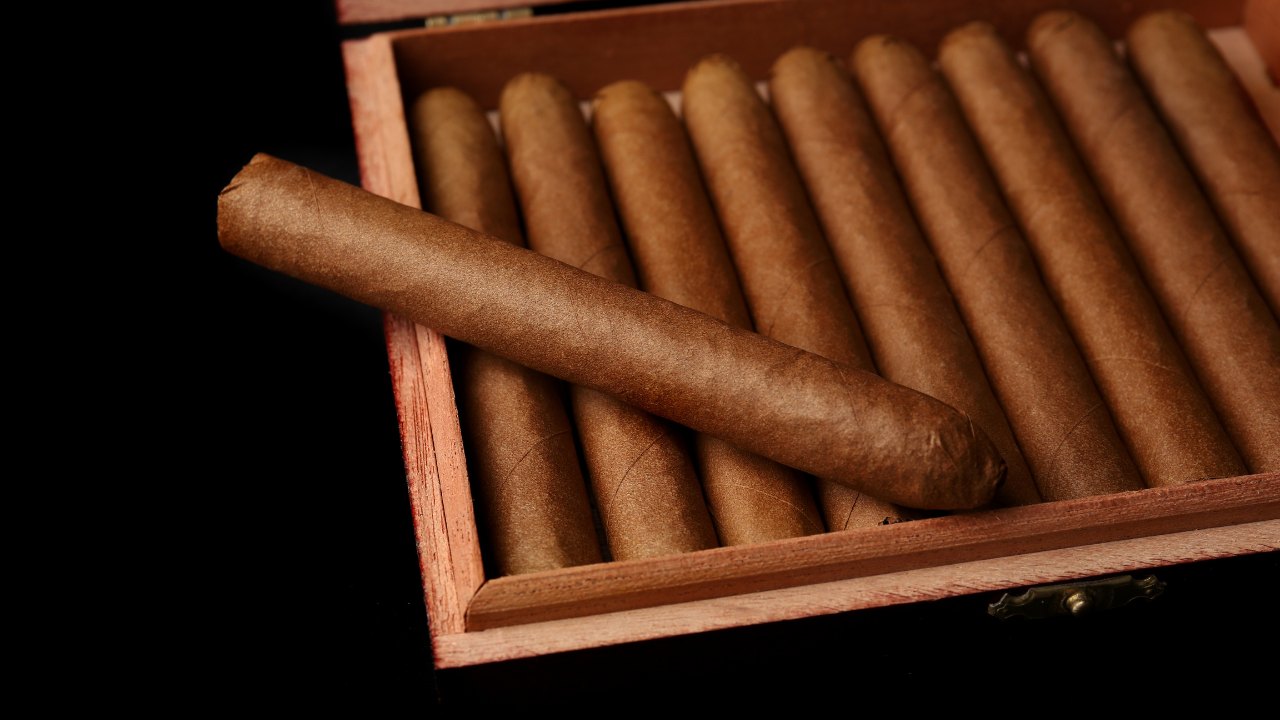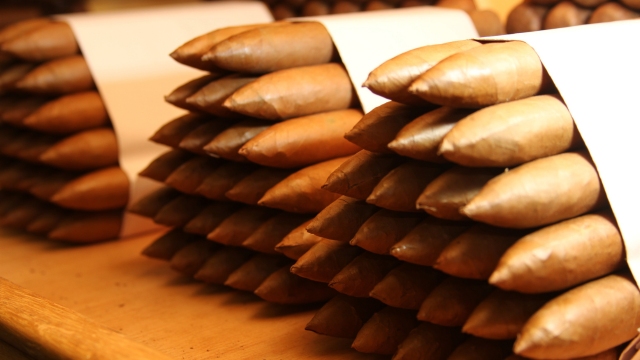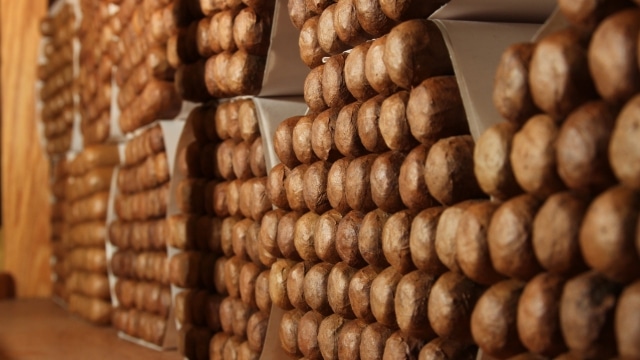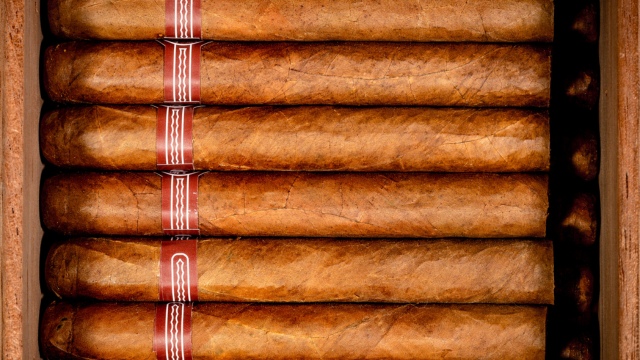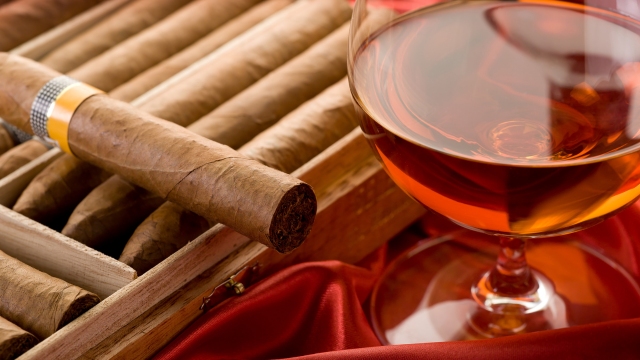Imagine the pleasure of enjoying a perfectly preserved, fine cigar after a long day. The rich, complex flavors and smooth, satisfying smoke can transform an ordinary evening into a memorable experience. But what if that perfect cigar was ruined by improper storage?
For cigars to remain fresh and moist, proper storage is essential. Learning how to keep cigars fresh is a crucial skill for any aficionado. If you don’t have a humidor, you can keep them fresh with alternatives like a mason jar, Tupperware box, Ziploc bag, small cooler, or damp paper towel.
From understanding the anatomy of a cigar to exploring advanced preservation techniques, we’ll delve into the world of cigar storage like never before, focusing on how to keep cigars fresh. So, let’s begin our journey towards long-lasting cigar enjoyment.
Introduction – How to Keep Cigars Fresh
Cigar smokers know that the key to a truly enjoyable smoking cigars experience lies in the preservation of their prized possessions. It’s crucial to understand the composition of cigars and their storage needs to keep them fresh and flavorful.
We are going to delve into the structure of a cigar and the principles of humidity and temperature for correct storage.
Understanding Cigar Composition and Storage Needs
A cigar is composed of a wrapper, binder, and filler, and storing cigars properly is crucial for maintaining its quality and flavor. It’s scientifically recommended that premium cigars be stored at 70% RH (relative humidity) and a temperature of 70 degrees Fahrenheit for optimal preservation.
Anatomy of a Cigar
Every cigar is a work of art, carefully crafted from three essential components: the wrapper leaf, binder leaf, and filler tobacco. The visually appealing and protective wrapper leaf not only contributes to the overall flavor and aroma of the cigar but also plays a significant role in the storage requirements.
Simultaneously, the binder and filler are crucial for preserving the suppleness and texture and may be impacted by changes in humidity. Therefore, understanding the anatomy of a cigar is the first step in ensuring that your cigars remain fresh, moist, and ready to be enjoyed.
The Science of Humidity and Temperature
When it comes to preserving cigar freshness, maintaining the right humidity and temperature levels is crucial. Ideal cigar storage conditions are 70% humidity and 70 degrees. Moreover, 65-72% humidity and 65-72 degrees are also considered acceptable.
However, high humidity can have detrimental effects, such as causing cigars to become damp and absorb too much moisture, resulting in a loss of flavor and the growth of mold.
Maintaining a consistent temperature is equally important, as fluctuations can lead to cracking or splitting of the wrappers and affect the aging process, changing their flavor profile.
Essential Tools for Cigar Preservation
Now that we have a solid understanding of cigar composition and the science behind humidity and temperature let’s explore the essential tools required for cigar preservation: humidors, hygrometers, and humidifiers. These tools help maintain the ideal environment for your cigars, ensuring they stay fresh and flavorful.
Humidors: Types and Selection Guide
A humidor is an essential tool for preserving cigars, and there are various types available, such as wood humidors, acrylic glass humidors, metal humidors, cigar cabinets, Spanish cedar humidors, jars, and Napoleon humidors.
Additionally, when selecting a humidor, it’s advisable to choose one that is larger than the expected number of cigars to be stored, allowing for adequate room for your collection and facilitating proper air circulation.
Renowned retailers like Famous Smoke Shop offer a wide selection of humidors to suit the needs of both novice and experienced cigar smokers.
Hygrometers and Humidifiers
Hygrometers and humidification device play a vital role in preserving cigars by maintaining the ideal humidity levels for cigar storage. A hygrometer measures the relative humidity, allowing you to determine when additional distilled water is needed to maintain the optimal level.
Moreover, there are various types of hygrometers suitable for cigar storage, including analog hygrometers, digital hygrometers, needle hygrometers, connected hygrometers, and electronic hygrometers.
High-quality hygrometers, such as the Xikar Digital Gauge, Cigar Oasis Caliber IV, and Savoy Digital Hygrometer, are crucial to ensure that you store your cigars in the best conditions possible.
Setting Up Your Humidor for Optimal Storage
A well-maintained humidor is essential for keeping your cigars fresh and flavorful. This section will cover the significance of the seasoning process and the calibration of hygrometers for the best cigar storage.
The Seasoning Process
Seasoning a humidor is an essential step in preparing it for cigar storage. This process involves introducing moisture into the wood of the humidor to maintain the desired humidity levels, which is essential for keeping cigars fresh.
To season a humidor, remove all items from the interior, including trays, humidifier, and hygrometer. Next, lightly coat the cedar with either distilled water or propylene glycol solution. Place a semi-wet sponge on a plate and leave it in the humidor with the lid closed for 12 hours.
After this period, open the lid and remove the sponge. Then, allow the humidor to sit for at least 14 days to ensure it’s fully seasoned. Finally, the humidor is ready to be filled with cigars.
Calibrating Hygrometers
To accurately monitor and maintain humidity levels in your humidor, it’s essential to calibrate your hygrometer. This can be accomplished through a salt test, which helps ensure that you store cigars properly and maintain their freshness.
Regular calibration, particularly when changing batteries or if the hygrometer is dropped, will ensure that your hygrometer provides accurate readings and contributes to optimal cigar preservation.
Advanced Cigar Preservation Techniques
For those who want to take their cigar preservation skills to the next level, this section will explore advanced techniques for managing humidity fluctuations and developing long-term storage plans. These techniques will help you maintain the ideal storage environment for your cigars, ensuring they remain fresh and flavorful for years to come.
Managing Humidity Fluctuations
Cigar lovers knows, maintaining consistent humidity levels is key to preserving the quality and flavor of your cigars. To ensure optimal humidity levels in your humidor, consider using a digital hygrometer, humidification devices, monitoring and adjusting regularly, and considering ventilation.
Long-Term Storage Strategies
For cigar enthusiasts looking to age their collection or simply ensure their cigars remain fresh for an extended period, long-term storage strategies are crucial. To begin with, use a well-maintained humidor to control humidity levels.
Additionally, keep aged cigars in their original boxes, as they provide additional protection. Monitor and adjust humidity levels regularly to prevent drying or over-humidification. Moreover, store cigars in a cool and dark environment to minimize exposure to heat and light.
Remember, proper long-term storage can enhance the flavor and complexity of your cigars, making them even more enjoyable to smoke.
Alternative Cigar Preservation Methods Without a Humidor
Not everyone has access to a humidor, but that doesn’t mean you can’t still preserve your cigars effectively. This section will uncover different ways to preserve cigars without a humidor, such as using plastic bags, Tupperware, and coolers and avoiding sunlight and heat exposure.
Plastic Bag & Humidification Pack Method
The Plastic Bag and humidification Pack Method is a short-term storage solution for cigars that utilizes Ziploc bag method. In essence, this method can be employed for any type of cigar and is an effective temporary storage solution if you don’t have a proper humidor.
Remember that it’s not suitable for long-term storage, yet it can help keep your cigars fresh for a few weeks or months.
Tupperware & Sponge Method
Another alternative method for preserving cigars without a humidor is the Tupperware & Sponge Method. In this approach, by placing a damp sponge in a Tupperware container, you can create a makeshift humidor that maintains the desired humidity levels for your cigars.
This method is cost-effective and can be more convenient than using a traditional humidor. However, it’s important to ensure that the sponge doesn’t become too wet, as this can lead to excessive humidity and potential mold growth.
The Coolerdor
If you have a large cigar collection but don’t have a traditional humidification unit, the Coolerdor may be the ideal storage solution. By converting a cooler into a cigar storage system, you can maintain the ideal humidity and temperature levels while also accommodating a larger quantity.
Avoiding Sunlight and Heat
One simple yet crucial aspect of cigar preservation is avoiding exposure to sunlight and heat. Keep in mind that direct sunlight can cause chemical reactions within the tobacco, altering the flavor and even causing the wrapper to become bleached and more fragile. Additionally, heat can cause the essential oils to evaporate, resulting in a loss of flavor.
Store cigars in a cool, dark environment with dry air, away from direct sunlight and heat sources to maintain freshness and flavor.
Travel Storage Solutions
For cigar enthusiasts on the go, travel storage solutions such as travel-sized humidors, plastic bags or coolers, Tupperware container, and leather travel humidors can help you preserve your cigars while away from home. Most humidors are portable and they also allow you to maintain the ideal humidity and temperature levels, ensuring they stay fresh and flavorful wherever your travels take you.
Also Read: Why Don’t You Inhale Cigars and What You Should Do Instead: A Complete Guide
Troubleshooting Common Cigar Preservation Issues
Even with the best way to store cigars, you may occasionally encounter issues like mold and tobacco beetles or find that your cigars have become dry and lost their freshness.
Identifying and Addressing Mold and Tobacco Beetles
Mold and tobacco beetles are two common issues that can affect the quality of your cigars and even ruin your entire collection if left unchecked. In particular, the presence of mold may be indicated by a blue-green color, a sticky or pasty texture, and difficulty brushing it off. To detect tobacco beetles, inspect the exterior for small pinholes, which indicate where the beetles have chewed through the wrapper.
In both cases, it’s crucial to address the issue immediately to prevent further damage and preserve their freshness and flavor.
Reviving Dry Cigars
If you discover that your cigars have become dry and lost their freshness, don’t despair – there’s hope for reviving them. To bring life back, you can store cigars properly in a humidor with a 70-72% humidity level. Allow the cigars to remain inside for at least one week before smoking, as this will help rehydrate and restore their flavor, as well as improve the humidor’s performance.
Consequently, proper storage and maintenance will ensure that your cigars remain fresh and enjoyable, even if they’ve experienced a period of dryness.
Best Practices for Cigar Storage
Preserving the freshness and flavor of your cigars is an art, and there are certain best practices that can help you achieve optimal cigar storage. This section will delve into the optimal procedures for storing cigars.
Cigar Rotation
Rotating cigars in your humidification unit is a simple yet important practice to ensure even aging and uniform humidity distribution. Consequently, through regular rotation, you can ensure that all cigars in the box are exposed to the same humidity level, preventing any one cigar from being over-exposed to the humidifier.
Separating Different Cigar Flavors
When it comes to storing flavored cigars, it’s essential to separate them from non-flavored or differently flavored cigars to prevent flavor transference. Each flavor has its unique characteristics, and blending flavors can alter the balance and overall taste of the cigar.
Consequently, by storing each flavor separately in its compartments, you can maintain the distinct flavors and enjoy their unique tastes as the creator intended.
Using a Humidifier Source
Using a humidifier source, such as humidifier gel beads or floral foam blocks, is another crucial element of maintaining the ideal humidity level for cigar storage. Moreover, these devices release or absorb moisture as needed to maintain the humidity at the desired level, typically around 70%.
What Not To Do: Wooden Box Method
While wooden cigar boxes may be a tempting storage solution, they should be avoided for long-term storage. However, wooden boxes lack an airtight seal, allowing humidity to dissipate and causing the cigars to dry out and lose flavor.
Instead, invest in a humidification system or use one of the alternative preservation methods mentioned earlier to maintain the freshness and flavor of your cigars. The good news is a few hookah bars sell good humidors.
Also Read: Savoring Every Puff: How Long Do Cigars Last and What Factors Influence Their Lifespan?
Final Thoughts
Cigar preservation is an essential aspect of the cigar smoking experience, and by following the best practices, you can ensure that your cigars remain fresh, flavorful, and ready to be enjoyed at any time.
So, invest in proper storage and preservation, and you’re rewarded with a truly memorable smoking experience.
Related Questions
Still have questions? Check out a couple of common ones below.
Do cigars stay fresh in the refrigerator?
Storing fine cigars in the refrigerator is not recommended, as the cold, dry, and sealed environment will dry out the cigars and ruin their quality.
How often should cigars be rotated in a humidor?
For optimal aging, premium cigars should be rotated every 1 to 3 months in a good humidor.



